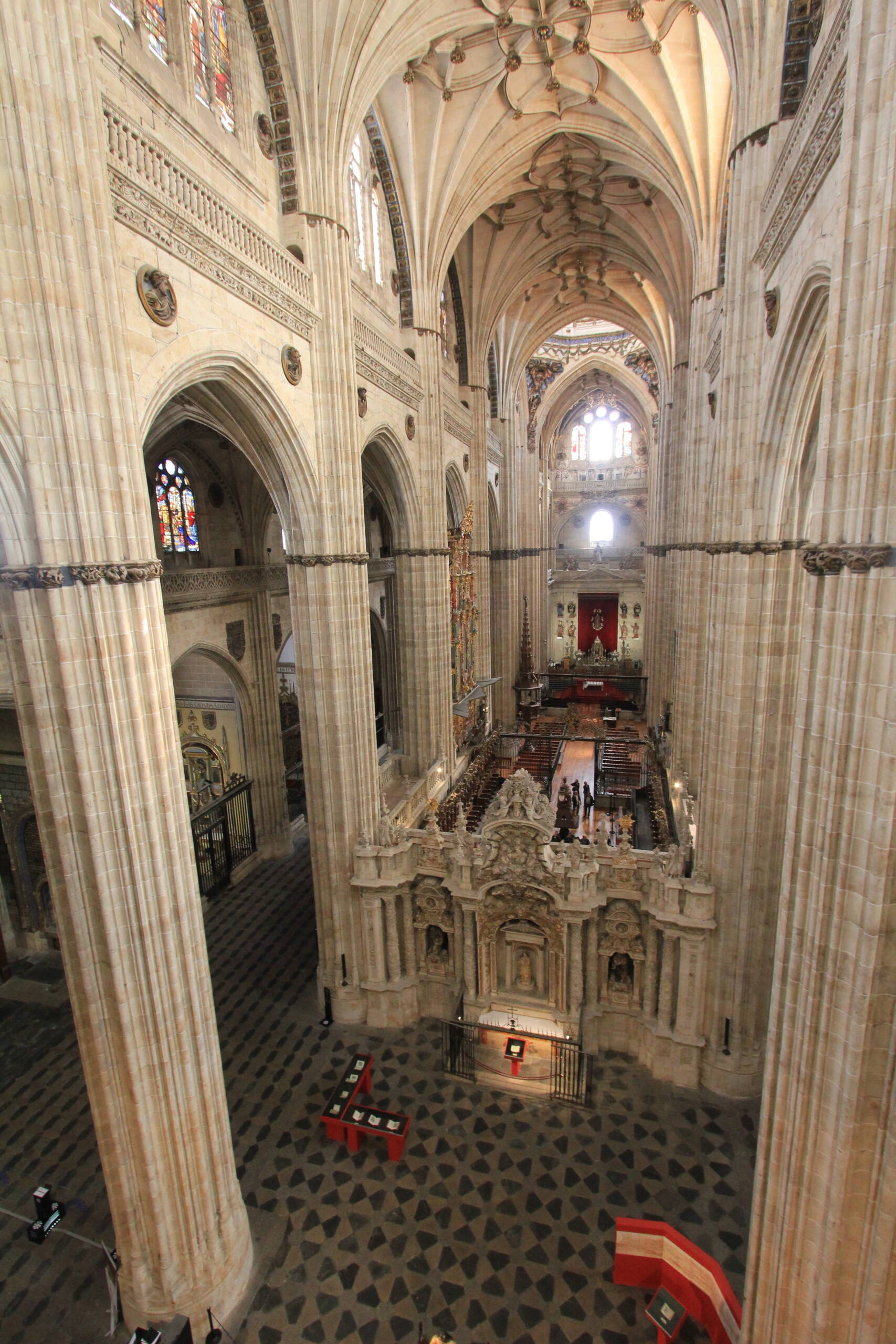From this lofty perspective, the vastness of the New Cathedral of Salamanca unfolds like an ocean of stone and light. The photograph captures the dizzying height of its Gothic vaults, where ribs of pale sandstone arch upward and interlace with sculpted bosses, giving the impression that the ceiling itself is a web spun by centuries of devotion. The slender pillars rise like stone forests, narrowing as they climb, until they seem to merge with the heavens.

The play of light is striking—soft radiance filters through stained-glass windows set high in the clerestory, splashing reds and golds against the otherwise austere walls. Down below, the patterned floor tiles create a rhythm of dark lozenges against pale stone, guiding the eye toward the choir stalls and the richly ornamented reredos of the main altar. One notices the imposing baroque screen, laden with sculptural detail, that divides the choir from the nave—an architectural flourish that feels both theatrical and devotional.
What makes this angle so powerful is the sense of scale: human figures at the base appear almost like ants, dwarfed by the sheer immensity of the space. It is a reminder of how these cathedrals were not merely built for worship but as demonstrations of faith made material—testimonies in stone to the ambition of the Spanish Golden Age. Salamanca’s New Cathedral, begun in the early 16th century and completed nearly 200 years later, fuses late Gothic with Renaissance and Baroque touches, and in this photograph you can feel the layering of styles, each generation leaving its mark.
Standing here, you can almost hear the centuries—the footsteps of pilgrims on the Camino de Santiago, the hushed prayers of students from the city’s ancient university, the echo of organs filling the nave with rolling sound. It’s not just a building; it’s a vessel of time, holding the voices, ambitions, and dreams of those who built and inhabited it.
Leave a Reply